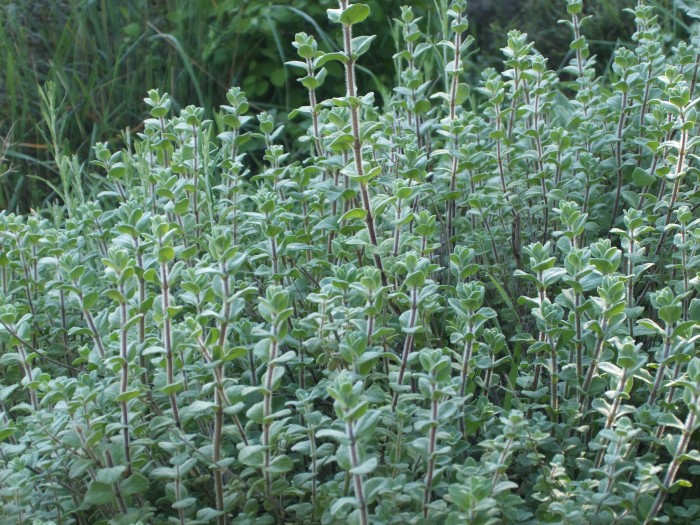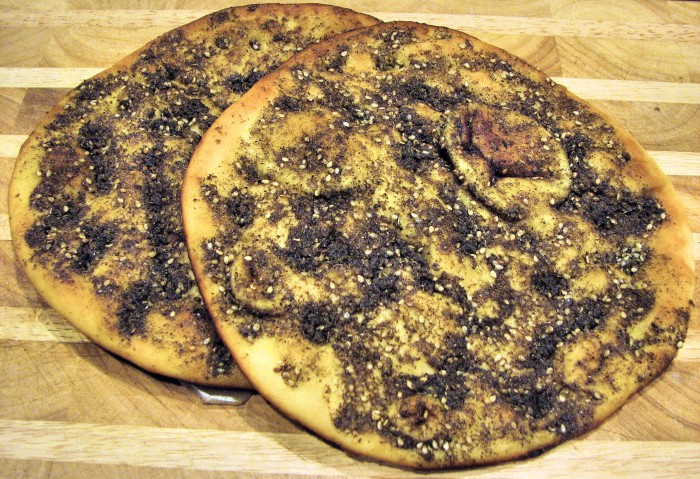The 2016 issue of Environment and Society focuses on “Plants and Peoples.” In some of the humanities and social sciences, human-plant studies, like those of human-animal relations, are perhaps in danger of being subsumed by the broader rubric of a multispecies approach to ecological assemblages. Perhaps this will be a fruitful path to take, but it may also betray a lack of intellectual commitment to what are after all quite recent engagements with, and foregrounding of, human-nonhuman relations and political conditions. Maybe we shouldn’t let the Questions of the Animal and the Plant escape our attention quite yet, before we have satisfactorily traced their complex meanderings through our sociopolitical ecologies. There are still radical stories to tell before they escape, or are rendered into the all-encompassing Gaia of a multispecies approach. As a contribution to this storytelling, here is some “plant-thinking” in the context of recent ecological developments in Palestine/Israel.
Food Plants and Cultural Heritage: The Case of Za’atar in Palestine
You may know za’atar as a Middle Eastern spice mix, a combination of thyme, sumac, sesame seeds, salt, sometimes other spices, and, crucially, the dried and ground leaves of a wild plant species belonging to the genus Origanum (Lamiaceae), named O. syriacum. Why have I used the Latin nomenclature here? Because in Palestine this ingredient of the spice mix known as za’atar is also called za’atar. Other wild plants in Palestine are also called za’atar—Satureja thymbra (savory, or Roman or European hyssop, or wild thyme), Coridothymus capitatus (Persian hyssop, Israeli thyme, Spanish oregano), Thymbra spicata (desert or donkey hyssop)—but apart from the thyme species, these are rarely used as ingredients in the za’atar spice blend. Origanum syriacum is the preferred and most commonly used plant in za’atar mix. In English it is known as Syrian oregano, or wild marjoram. In Hebrew it is called ezov and is often referred to as “biblical” hyssop (“hyssop” is often the translation of “ezov” in biblical texts, probably due to phonetic similarity). This is not the same hyssop as the various plant species included in the genus Hyssopus. Suffice to say, za’atar and ezov are generic terms for a variety of wild plant species, but the wild plant O. syriaca is most definitely the specific preferred ingredient in za’atar mix.

If za’atar—ambiguous, uncertain—slips through taxonomic and semantic categorization, then tracing its historical roots is slightly less troublesome. Recent analysis of DNA data has shown that O. syriacum is an ancient species that in all likelihood developed in the east Mediterranean, probably in Syria where its wild stands may have originated and still proliferate in the present day. The Classical writings of Pliny the Elder and others describe wild marjoram (as well as several of the other za’atar ingredients) being grown in Roman kitchen gardens, and there is earlier evidence for the use of such plants in horticultural practices from first millennium BC Mesopotamian clay tablet sources. In some Hebrew and Christian biblical text translations, “hyssop” is mentioned (e.g., in Exodus, Kings, Psalms, John), often as an herbal medicine or remedy and in ritual and funerary practices. However, direct archaeobotanical evidence of ancient Origanum sp. seeds is rare, but several instances are known from Bronze Age sites (including Troy) throughout the Aegean and Mediterranean. Mainly we have to rely on historical documentary sources for information regarding the culinary and (folk) medicinal uses of the plant in the medieval and Ottoman periods (see Lev 2003). In more recent years, these written sources have been complemented by oral histories and ethnographic accounts based in the rural communities and landscapes of the Middle East (e.g., Ben Ze’ev 2000, 2004).
Today, in Palestine and Israel, the gathering of wild O. syriacum (za’atar) has become a politicized food practice. In 1977, a research group of Israeli ecologists and botanists advised that due to overharvesting, wild za’atar should be designated an endangered wild plant species (Lev 2002). As a result of this advice, O. syriacum was declared a protected species in both Israel and the West Bank, and its collection prohibited by Israeli law. O. syriacum has also been listed as a “vulnerable” species on Jordan’s “Red List” of endangered plants, again due to “severe collection” (Taifour and El-Oqlah 2014: 122).

For some scientists, the overharvesting of wild za’atar in the West Bank comes as an inevitable consequence of technological innovation and Palestinian demographics. Mayer-Chissick and Lev (2014) lay the blame at:
…the modernization of the Arab village, the invention of the fridge for example, [which] enable the family to pick more than the amount needed for the season and freeze it for the summer. This excessive gathering combined with the growth of the community brought almost to a disappearance of some of the plants, and some of them like the wild (Syrian) marjoram (Origanum syriacum) and the tumble thistle (Gundelia tournefortii) had to be declared protected by law and their gathering is forbidden … It [O. syriacum] has been declared a protected species in Israel as early as 1977, and that protection proved a key factor in its survival as a wild plant. (2014: 11)
Protecting the wildness of za’atar, however, is only part of the political ecology at work here. The ban on gathering the wild plant in the West Bank has, since the 1980s, been accompanied by a sharp increase in the cultivation of O. syriacum in Israel: “The increased demand by industry for uniform and high quality raw material, together with the modern developments that fewer and fewer people still collect plants from the wild, and that some of the wild species plants are protected, has necessitated the cultivation of various species … the goal is the domestication of plants and the development of optimal growth methods for modern industry to replace traditional methods” (Dudai and Yaniv 2012: 38-9). This program of za’atar domestication and breeding (Dudai 2012) has contributed to the gradual erosion of traditional Palestinian rural practices and economic livelihood.
How is the ban on the gathering of wild za’atar imposed? Media reports since 2006 regularly describe the confiscation of za’atar plants from Palestinians—mainly women—at West Bank checkpoints. The imposition of fines of 5,000 new Israeli shekels (around $1,300) has also been reported. The same level of enforcement has not been documented for those collecting wild za’atar in Israel, or for Israeli settlers living in the West Bank, although the implementation of fines for picking protected wild flowers in Israel has been a successful result of recent lobbying by environmental groups. Wild flowers are not, needless to say, everyday ingredients in the rural traditions of Palestinian foodways. In the West Bank wild za’atar—and other traditional food resources—stand in metonymic relation to the broader landscape and its traditions. Food provides a foundation and container for community and individual histories and memories, which are always tied to land and landscape. And also to land and landscape long gone but brought to mind by the continuing practices of plant gathering, preparation, and consumption. The prohibition of gathering even small amounts of za’atar therefore becomes, like so many other Palestine-Israel issues, an issue of land control and land access. Given the increasing and relentless land seizures in the West Bank by successive Israeli governments—involving the uprooting of trees, plants, and forests and replacing them with the architectures of colonial settlement—perhaps we might understand the use of refrigerator technology mentioned by Mayer-Chissick and Lev as a means of social storage, in anticipation of, or compensation for, a day when the field of wild za’atar is confiscated or destroyed.
Brian Boyd teaches archaeology and Museum Anthropology in the Department of Anthropology at Columbia University.
References
Ben Ze’ev, E. 2000. Narratives of Exile: Palestinian Refugee Reflections on Three Villages, Tiret Haifa, Ijzim and Ein Hawd. Unpublished dissertation, University of Oxford.
Ben Ze’ev, E. 2004. “The Politics of Taste and Smell: Palestinian Rites of Return.” Pp. 141–160 in The Politics of Food, ed. M.E. Lien and B. Nerlich. Oxford: Berg.
Dudai, N. 2012. “Domestication and Breeding of Wild Medicinal and Aromatic Plants—Thirty Years of Experience in Israel.” Acta Horticulturae 955: 175–183.
Dudai, N., and Z. Yaniv. 2014. “Endemic Aromatic Medicinal Plants in the Holy Land Vicinity.” Pp. 37–58 in Medicinal and Aromatic Plants of the Middle East, ed. Y. Zohara and N. Dudai. Dordrecht, Netherlands: Springer.
Lev, E. 2003. Medicinal Substances in Jerusalem from Early Times to Present Day. Oxford: Archaeopress. British Archaeological Reports I.S. 1112.
Mayer-Chissick, U., and E. Lev. 2014. “Wild Edible Plants in Israel Tradition versus Cultivation.” Pp. 9–26 in Medicinal and Aromatic Plants of the Middle East, Y. Zohara and N. Dudai. Dordrecht, Netherlands: Springer.
Taifour, H. and A. El-Ohlah. 2014. Jordan Plant Red List Volume I. Jordan: Royal Botanic Garden.
Cite as: Boyd, Brian. 2016. “A Political Ecology of Za’atar.” EnviroSociety, 15 June. www.envirosociety.org/2016/06/a-political-ecology-of-zaatar.
